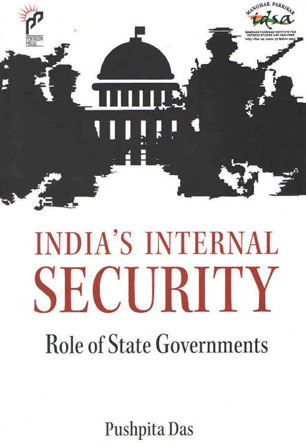The Battle for Siachen Glacier: Beyond Just a Bilateral Dispute
Contemporary scholarship working on Indo-Pak issues has tended to view Siachen as a bilateral issue, and therefore, not much literature has been generated analysing the conflict beyond this spatio-temporal realm. Stephen Cohen terms the battle over Siachen as a ‘struggle of two bald men over a comb’ and dismisses the conflict as militarily unimportant. Veteran journalist Myra Macdonald’s book Heights of Madness gives an excellent account of the Siachen saga from both Indian and Pakistani sides but does not provide any strategic evaluation of the conflict. Lt Gen.
Compressing Politics in Counterinsurgency (COIN): Implications for COIN Theory from India’s Northeast
Counterinsurgency (COIN) has long been recognised as a political phenomenon, but current theoretical understandings of politics in COIN reflect ideal types, overlooking the depth and complexity of the politics of insurgency and COIN. Drawing from India’s experience in its northeastern region, this article argues that COIN theory overlooks the political agency and multiplicity of actors, as well as overlooking the fundamentally political scope of interactions that take place between them.
Unheeded hinterland: identity and sovereignty in northeast India, by Dillip Gogoi
Partly the result of a political and physical isolation compounded by decades of conflict in the region, Northeast India is often viewed through the prism of security studies, institutional performance or developmental governance. While important contributions in themselves, a state-centric focus often overlooks the complexity of the causes and dynamics. It ignores the consequences of regional societal forces’ articulation of identity, nationalism, separatism and sovereignty that can shape political boundaries in the region, thus overlooking the salience of subaltern narratives.
The Oil Market Challenge
Over the last few years, it has been a roller coaster ride for the oil markets. From $110 a barrel in 2010, prices began dropping from June 2014 and finally dropped to below $30 a barrel in January 2016. Then from the end of the first quarter of 2016, prices started recovering and have been hovering around $50 a barrel since May
Contribution of Brijesh Mishra in Strategic Affairs and Security Reforms
The late Sri Brijesh Mishra's perceptive mind and pragmatism in the formulation of foreign and security policies earned him the title of ‘Chanakya of the modern period’. During his long career as a diplomat, he held many important positions and retired from the Indian Foreign Services (IFS) as India's permanent representative in the United Nations (UN).
Taming India’s Maoists: Surrender and Rehabilitation
This article seeks to make a preliminary assessment of the surrender and rehabilitation policy being adopted towards Naxalites. The examples/experiences cited in this paper refer largely to cadres and leaders of Communist Party of India (Maoist), or CPI (Maoist). It is part of a multi-pronged conflict management and resolution strategy and is required to be implemented along with firm action by police against those who follow the path of violence.
Left-Wing Extremism and Counterinsurgency in India: The ‘Andhra Model’
India has a long history of left-wing extremism. The largest and most powerful left-wing extremist group today is the Communist Party of India (CPI) (Maoist), which is active in many states across the country. Its ultimate goal is to capture power through a combination of armed insurgency and mass mobilisation. In recent times, the southern state of Andhra Pradesh has achieved notable success in counterinsurgency operations against the Maoists. This article outlines the ‘Andhra model’, which involves a mix of security, development and political approaches.
Essays on the Kuki–Naga Conflict: A Review
The Kuki–Naga conflict, which was mainly fought on land and identity issues, resulted in the uprooting of hundreds of villages, with the loss of more than 1,000 lives and enormous internal displacement. The British colonial policy of governance in the north-east frontier of India and the rise of ethnic nationalism among both the Kukis and Nagas in the post-independence period were the roots of the conflict.









